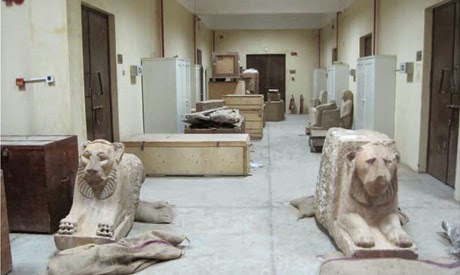In 1897 a magnificent copper statue of King Pepi I was discovered in Hierakonpolis (‘city of the falcon god’), south of Luxor. To the ancient Egyptians it was Nekhen, royal residence of the Kings of Upper Egypt at the very beginnings of Egypt’s history.
In the corner of the town was its temple, dedicated to their falcon god Nekheny, and buried within the sacred precinct a magnificent cache of objects, including the famous Narmer Palette and this statue.
Although badly corroded the statue is still striking with its strong, clear eyes.
The smaller statue inside is something of a mystery. Initially it was thought to represent Pepi I himself, either at a much earlier age or rejuvenated after the Heb-Sed. Most scholars today however believe the small statue depicts Pepi I’s son and future king, Merenre. Pepi I was the son of Teti, founder of Egypt’s 6th Dynasty (ca. 2,300 B.C.) Pepi’s pyramid complex, named ‘Men-nefer’, was built at Saqqara. In the New Kingdom ‘Men-nefer’ began to be applied to the ancient capital across the river, which eventually became ‘Memphis’ to the ancient Greeks.
Today Pepi’s statue is in the Egyptian Museum in Cairo (JE 33034).
Photo: Kenneth Garrett













